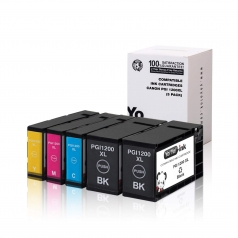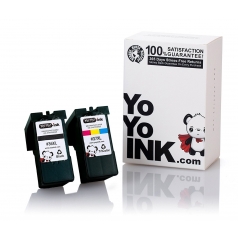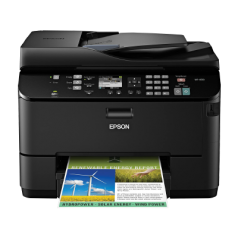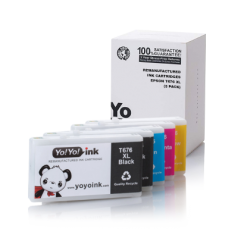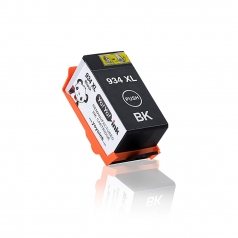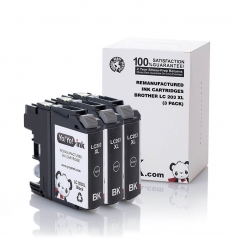----- [A Fast and Comprehensive History of Ink Production] ------
What is Ink made of? It’s a simple question but has been asked countless times because there is no easy answer. The reason is simple; there are several ink types, and each one has its own unique property.
By definition, Ink is a fluid or viscous material used for writing, drawing, or printing to record information or transmit thoughts in semipermanent form.

History of ink
As early as 2500 B.C., the Egyptians had found a suitable material to mark papyrus. This ink was composed of water-soluble natural gums, glue, and water, or possibly an oil, with powdered animal or vegetable charcoal as the coloring matter.
Learn more: Ancient Egyptian Ink
Modern inks have little in common with crude material of early times except for one remarkable similarity. All inks are intimate mixtures of a vehicle and a coloring matter, with other substances frequently added to impart unique properties.
The vehicle may consist of a solvent alone, but most are composed of a solvent and a soluble resin or another compound to form a varnish or of treated or untreated oils. The coloring matter is a mixture of pigments or dyes.
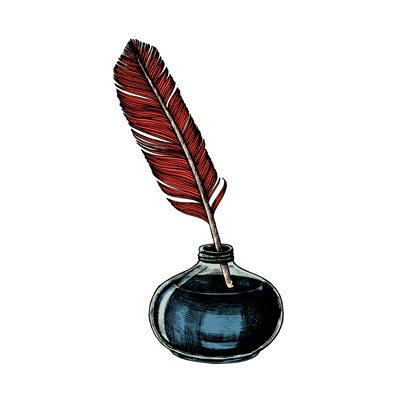
Writing Inks
Writing inks must have unique characteristics to function correctly. These may be summarized as clarity, easy flow, stability in glass, very little odor, intense color, and tackles film on drying. The solvent in writing inks is usually water, although small amounts of organic solvents may improve flow and stability. The color in writing inks is typically a water-soluble organic dye.
Dyes are available to cover all of the colors and shades that may be desired. However, these dye inks are not permanent and fade in a relatively short time. Inks that are to be used for permanent records, such as bank and government records and documents, must have a certain iron content because the iron is not destroyed by age.
Record inks are usually mixtures of tannic acid, gallic acid, ferrous sulfate, a preservative, and a soluble blue dye dissolved in water. This ink is originally blue, but, on exposure to air, ferric gallotannate is formed, and the ink gradually turns black. Ferric gallotonnate has excellent stability, but if it does decompose to iron oxide, this material remains on the paper. It may be treated with a gallic or tannic acid solution to restore the writing’s black color.
India ink used for drawings is a permanent carbon suspension with shellac, borax, or soap in water. When shellac is used, the dried ink is quite waterproof and permanent.
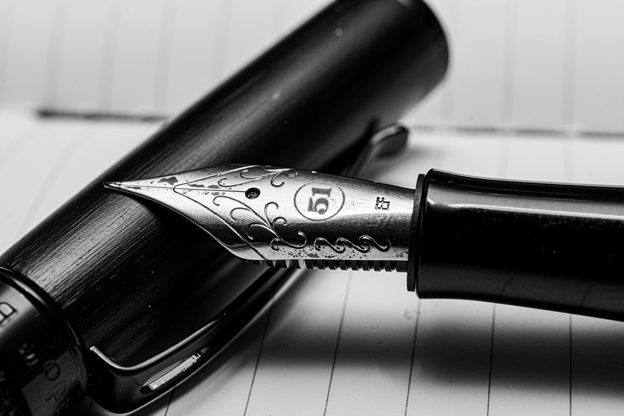
Printer inks - What is ink made of elements
Mixtures of vehicles and coloring matter, transferred by a mechanical printing press from a bulk state to form an image on a surface, are considered printing inks. Their basic composition varies according to the transfer or printing process used.
Today, practically all printing falls into one of three process classifications: typography or letterpress; lithographic, also known as planographic or offset, gravure, which may be called intaglio, photogravure, or rotogravure.
In typographic printing, ink is applied to a raised and designed surface of the metal or a raised rubber surface in the separate kind of letterpress designated as aniline or flexographic printing. An impression is made, most commonly on paper, from this raised surface.
Lithographic printing applies ink to a plane-metal or stone surface that has been previously treated to accept the ink only in certain desired areas; an impression is made from those ink areas on another surface.
This gravure process employs an etched or engraved depression below the printing plate’s surface; only the depression is filled with ink, which is subsequently transferred to another surface by contact, making an impression of the engraving.
The primary consideration of the formulator of printing inks is the method or printing employed. Highspeed rotogravure magazine presses use a thin fluid of low viscosity. The process calls for an ink easily applied to miniature, etched cells below the printing-plate cylinder’s surface that can be wiped from the unetched portion efficiently and transferred to the printing surface instantly upon contact.
Since gravure ink dries mostly by evaporation and only partly due to absorption by the paper, highly volatile solvents are used in the vehicle. The resin or binder in the vehicle dissolves thoroughly in the solvent and, after mixing the pigments, leaves an impression upon transmission that dries rapidly and is not sticky.
A gravure ink is another type, one for steel – or copper-plate engravings, employs an entirely different vehicle of a short, butterflylike consistency. It is greaseless because, after the line engraving has been filled with ink, the excess must be thoroughly wiped off the plate’s unengraved surface without distributing the ink in the engraving.
Since hard papers are the usual printing surface for this slow, exacting process, absorption is responsible for minimal drying. Slower drying solvents are used so that the ink will not dry up in the engraving. However, the solvent is volatile enough and the binder hard enough for the ink to dry thoroughly without stickiness.
Except for flexographic inks used with a rubber type and “Vaporin” inks, dried with controlled gas flames, typographic and lithographic inks rely little upon evaporation for drying. Generally, typographic inks have a high viscosity and a long or “stringy” body, with tack or stickiness when on the press.
Lithographic inks are even heavier, but shorter or less stringy, and possess considerable tack. The vehicles for these inks seldom contain volatile solvents. Bodied oils or resinous varnishes with driers are used as vehicles. They dry primarily by oxidation. Linseed oil, linseed-oil-bodied varnishes, tung oil, and soybean oil are typical ingredients in such inks.
Flexographic and flame-drying vehicles are more like gravure; they contain some volatile solvents. The viscosity of these vehicles is controlled by the amount of solvent and kind of binder used. The end use of the printed product also plays a part in determining the composition of the vehicle.
A magazine ink, for example, would not be suitable for printing cellophane candy wraps as the vehicle would not adhere satisfactorily and might be softened by the ingredients of the candy. Such characteristics as gloss, flexibility, odor, clarity, resistance to scratch, rub, abrasion, and chemical action dictate a vehicle’s components.
The pigment is the coloring matter of ink. This is a solid portion which remains undissolved unless dyes are used. It is ground into extremely fine particles as it is thoroughly dispersed within the vehicle. Some inorganic pigments, including hydrated oxides of iron, chalk, white, and China clay, occur in nature and require only crushing, washing, and cleaning to be used in inks.
Important manufactured inorganic pigments are chrome yellows, iron blues, molybdate orange, cadmium reds, and titanium dioxide. Organic pigments are insoluble colors manufactured from natural or synthetic dyestuffs. Hansa and benzidine yellows, methyl violet and peacock blue, eosin, phloxine, and lithol- reds are common pigments of this type.
The blacks used in printing inks are carbonaceous, carbon black, furnace black, and lampblack, with few exceptions. A bronze powder of aluminum, copper, or alloy bronze is used to produce a metallic effect. A pigment’s presence affects the ink’s properties, such as gloss, opacity, consistency, resistance to fading, durability, and the impact of grease or soap. The use of printed material limits the choice of pigments.
Click here for more information about printing ink.
Where does ink come from today - Manufacture of Printing Ink
The primary process in printing ink is the grinding and dispersing of the pigment into the vehicle. In most typographic and lithographic inks, this is done in roller mills, which consist of two or more steel rollers turning at slightly different speeds.
Ball or pebble mills are employed when volatile substances are mixed, as in gravure ink. These mills are cylinder, tumble, or roll about. Other chemical manufacturing equipment is used to produce vehicles and for blending, mixing, and handling the intermediate and finished products.
Newspaper Inks. Newspaper ink is designed to permit fast printing with an acceptable quality of reproduction. Little thought is given to the permanence or rub since a newspaper has a short life, and the economy prohibits using costly materials that would impart improved characteristics. News ink is quite fluid, mainly when made for high-speed web presses that print both sides of the stock at one time.
If black, it is almost entirely composed of mineral oil vehicle and carbon-black pigment, with a toner dye or pigment present in a small percentage to overcome the brown tones of the oil and black pigments.
Driers are not commonly added, drying occurring by absorption of the oils into the paper stock. Colored new inks require the use of cleaner oils and are used under conditions requiring the impression of one ink over another, a more costly ink which contains driers is used.
Specialty Inks. Printing and decorating such items as glass bottles, wallpaper, plastic film wraps, metal parts, aluminum foil packages, toothpaste tubes, glassine, cellophane, textiles, metal toys, and containers calls for special inks.
They also consist of the basic components; a vehicle film-former and coloring matter, with additional substances to impart the special characteristics. The ink chemist varies the compounding to fit the ink to the requirements of the surface.
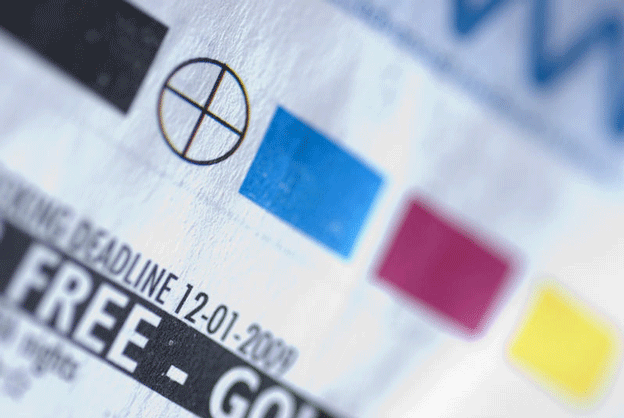
Printer Ink - Where does printer ink come from?
The majority of printer ink constitutes a base of soybean oil or linseed, or a heavy petroleum distillate as solvent. These are then mixed with pigments to make ink which dries through evaporation. The base is also referred to as varnish.
Black Ink
Black ink is manufactured through varnish and carbon black.
Color Printing Ink
Color pigments are made of salts and dyes or nitrogen-containing compounds like:
Yellow Lake
Peacock Blue
Phthalocyanine green
Diarylide orange
White pigments like titanium dioxide can be utilized alone to improve the attributes of certain colored inks. Such printers are added with varnish to produce color printing ink.
Printer Ink Cartridges
An ink cartridge is the inkjet printer component that has ink deposited into the paper while printing. Every ink cartridge has one or multiple ink tanks; producers add a chip and electronic contacts connected with the printer.
Thermal
The majority of inkjet printers like HP, Canon, and Lexmark use thermal inkjets. Within each ink reservoir partition is a heating element that contains a resistor or metal plate. As a response to a printer’s signal, a small current will flow through the resistor or metal to make it warm, and the ink with the resistor is vaporized into very tiny steam bubbles within the nozzle.
As a result, ink droplets are pushed out of the cartridge nozzle and into the paper. Such a process occurs in just a fraction of a millisecond.
The printing will depend on the ink’s smooth flow, which may be inhibited if the print head begins to dry, which occurs when ink levels are going low. To clean dried ink on a cartridge print head, use 91% denatured isopropyl alcohol since it doesn’t damage the sponge crucial for ink transfer to paper.
Isopropyl alcohol should be applied carefully since they are strong enough to dissolve clogs using a syringe or dropper. Distilled water on a lint-free cloth is also recommended since tap water may contain contaminants that clog the print head.
For more information on how to remove ink stains: Easy Ways to Remove Printer Ink Stains from Clothes, Carpet or Hand
The ink also serves as a coolant for protecting the metal-plate heating materials. Once the ink is depleted and printing is done, the thermal cartridge’s heating elements usually burn out, damaging the print head. Once the ink runs low, the cartridge must be refilled or replaced so the print head isn’t damaged due to overheating.
Piezoelectric
Epson printers utilized piezoelectric crystals in every nozzle in place of a heating element. The crystal changes size or shape once the current is applied, and this increases the pressure within the ink channel and forces an ink droplet through the nozzle.
Two major types of crystals are used in this respect: bi-morphs that bend and elongate once applied with electricity. The channels within a piezoelectric inkjet print head are formed using several techniques. However, the single common process is a lamination of metal plates that include precise micro-fabricated features of several shapes.
Such a cool environment enables the use of inks that don’t react well once heated. For instance, at least 1/1000 of each ink is vaporized because of intense heat, and the ink should not clog the printer with thermal decomposition products. It also makes smaller ink drops in some situations compared to thermal inkjet schemes.
Parts
- Cartridge body: stores the ink. Others may have hydrophobic foam that prevents a refill.
- Printhead: some ink cartridges contain printheads on them.
- Piezoelectric substrate (for piezoelectric printers): contains the piezoelectric crystal.
- Resistor or metallic plate (for thermal printers): heated using a weak electrical current that heats the ink.
Variants
Color inkjets generally follow the CMYK (cyan, magenta, yellows, and essential black) color scheme. A couple of distinct black forms have been made available through the years: one blends with graphical printing color, the other a nearly waterproof version for text.
The majority of inkjets contain black ink cartridges for text and either a combined CMYK or individual cartridge for every color. While maintaining the separation of every color was previously rare, it is becoming common nowadays. Several high-end inkjets provide cartridges for additional colors, like cartridges with ink specially designed for photograph printing.
Printer suppliers manufacture their ink cartridge type. Cartridges for various printers may be electrically or physically incompatible.
Some manufacturers like HP and Lexmark integrate the printer’s head on the cartridges, while others like Epson have the print head adhered to the printer itself. Both sides consider their approach as a lower-cost option for consumers. Epson has released some printers that utilized refillable ink tanks that reduce printing costs.

Re-manufactured Ink Cartridges
Remanufactured ink and toner cartridges make up 30% of the printer cartridge market. Remanufactured cartridges are original cartridges that have been recycled and tested for quality. Worn parts are replaced, and the device is refilled and re-assembled. Prices for remanufactured ink cartridges are much lower than the original brands.
Businesses always look for ways to cut printing costs and remanufactured printer ink cartridges are a convenient way to cut those costs. The amount will vary according to the remanufacturer of your choice, although it’s reasonable to gain at least 30% cut compared to the original equipment manufacturers (OEM). Ordering remanufactured ink cartridges in bulk like those in Yoyoink.com will yield greater discounts.
Learn more: Tips to Save Printer Ink
Compatible Ink Cartridges
Compatible ink cartridges are generic brands manufactured from new materials instead of recycling and remanufacturing original devices. Just like remanufactured cartridges, the primary benefit of using compatible cartridges is the affordable price and low printing cost.
And just like remanufactured ink cartridges, you can save much more ordering in high yield (XL) cartridges because of the higher page yields. Ordering compatible ink cartridges in bulk like those in Yoyoink.com will yield greater discounts.
Learn more: Printer Toner vs. Ink: Which is more suitable for me?





 Live Chat
Live Chat





